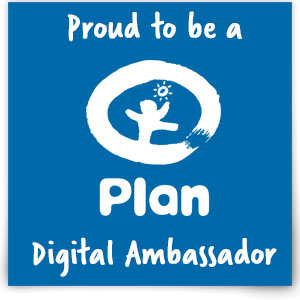Why You Should Learn… Hindi, Bengali or Punjabi
Following on from my post last week about learning English, here’s the fourth post in my series on the top 10 most spoken languages in the world. Hindi is the fourth most spoken language in the world, and I’ve decided to group it in a single post with the sixth and tenth most spoken languages, Bengali and Punjabi. While I’m aware that these are separate languages, and I in no way want to downplay the importance of each language, they are all spoken in a similar region, so the reasons for learning them do overlap.
No. 4: Hindi
240 million native speakers, 405 million total speakers. An official language of India.
No. 6: Bengali
181 million native speakers, 250 million total speakers. An official language of India and Bangladesh.
No. 10: Punjabi
109 million native speakers. Second most-spoken language in the UK, third most-spoken language in Canada.
Why Hindi, Bengali or Punjabi?
Spoken mainly in India and in expat communities of Indians around the world, Hindi, Bengali and Punjabi are the main languages spoken in one the fastest growing economies in the world. In some ways it hasn’t really expanded much on a global scale, except through expat families that have moved overseas. India’s other official language is English and although I have never personally been to India, I’m told that English is quite widespread. Learning a smattering of these languages if you are travelling to India can only be a good thing and will help you integrate, but is not strictly necessary. If I’m wrong on this point then please do let me know by commenting below.
Unless you have some connection to India or to an Indian community near you, then speaking Hindi, Bengali or Punjabi won’t be of huge benefit to you, especially because of the diffusion of English that followed the British colonisation of India.
All three of these languages descend from the ancient Sanskrit language and all belong to the Indo-Aryan language family. If you’trying to decide between them, then take into account that a speaker of Hindi can also understand verbal Urdu (the language of Pakistan), Bolloywood films are in Hindi, although there are a also lot of songs in Punjabi. From the research I’ve done, it seems that Hindi is the most useful of the three to learn. Here is a great page of key Hindi phrases you’ll need.
Top 5 Survival Phrases in Hindi:
- नमस्ते ‘Namaste’ – Hello
- अस्सलाम-वालेकुम ‘Assalam-wale-kum’ – Peace be upon you (as a formal greeting)
- शुक्रिया ‘Shukriyaa’ – Thank you
- आप कैसे हैं ? ‘Aap kaisey hain?’ – How are you?
- मुझे समझ में नहीं आता । ‘Mujhey samajh mein nahi aataa.’ – I don’t understand.
- अलविदा। ‘Alvida’ – Goodbye
If you’re looking for somewhere to start with Hindi, the BBC has an interesting beginner’s guide to the language. For more advanced speakers looking for reading material to help expand their vocab, the BBC has a whole site in Hindi. Learning resources for the other two languages are harder to come by but try looking into evening classes in communities where there a lots of Bengali and Punjabi speakers.
Next week I’ll be profiling the No.5 most spoken language: Arabic.
[You can still vote below for the languages you’d most like to learn]
__________________











Virginia – thanks for this post. In some ways you are right – but there is a wonderfully rich literature when it comes to Bengali and as well as being the state language of West Bengal it is the national language of Bangladesh. The lack of interest in foreigners re learning Bengali led me to set up a blog about learning My Bangla Diary and I’m also in a closed Facebook group of intermediate learners. So, yes, there are many reasons not to learn but that makes it a struggle for those who do want to!
LikeLiked by 1 person
P.S. My blog is called My Bangla Diary and is at http://mybangladiary.wordpress.com
LikeLike
@virginia Maharastra state is no.1 destination for international travellers.Hence,knowing MARATHI language is also beneficial.Please visit http://www.indiavoyager.in for knowing more about Maharashtra.
LikeLike